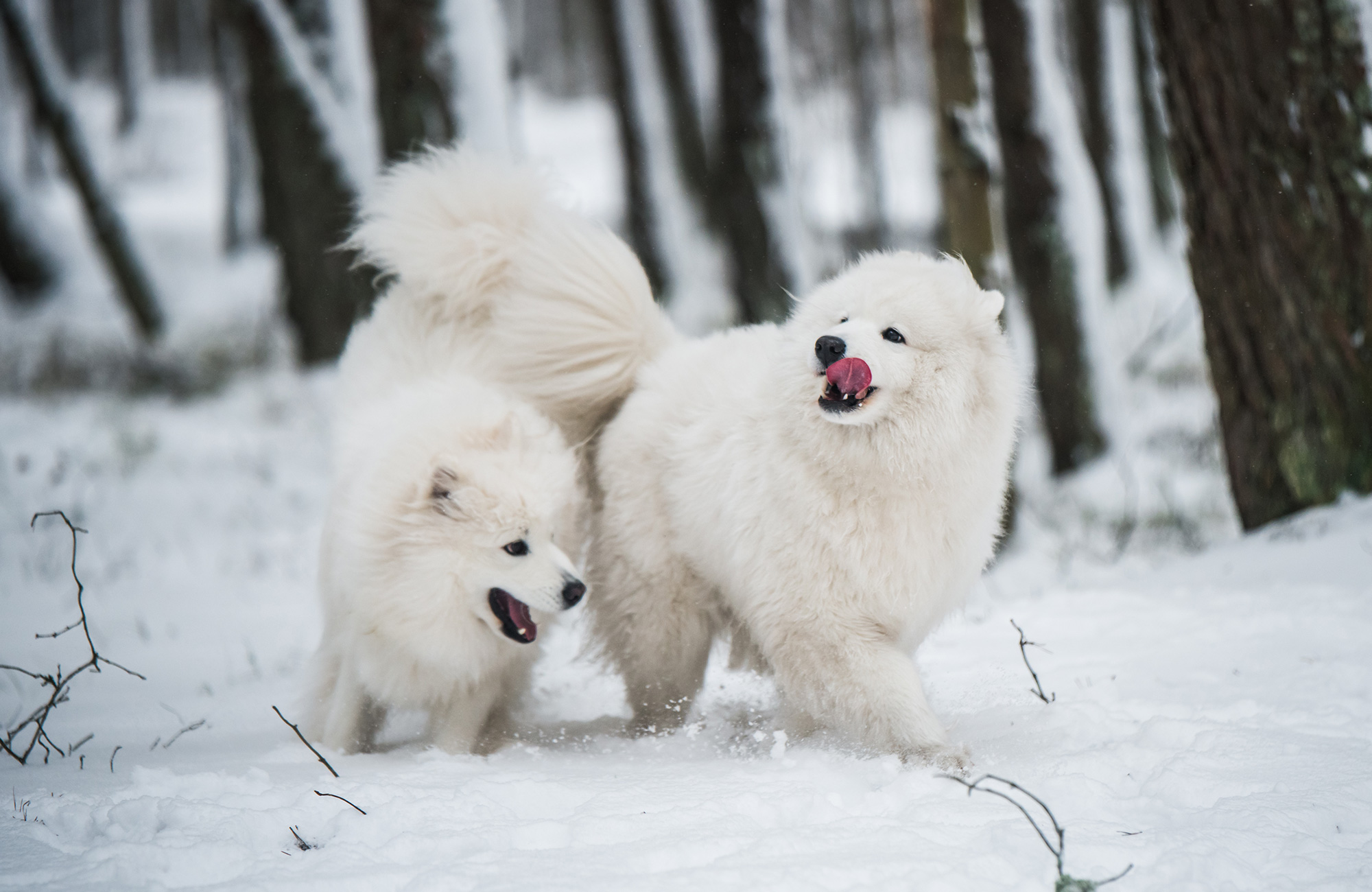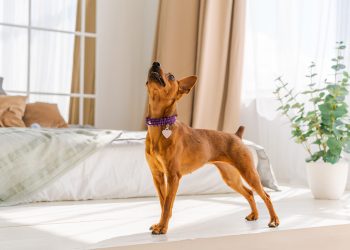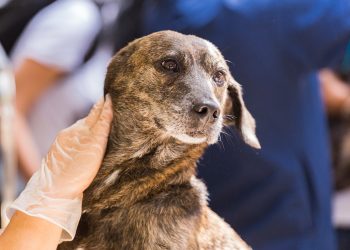Japanese Spitz, American Eskimo, and Samoyed are known for their thick, white fur coating and wonderful face. Their friendly demeanors are another reason why the entire dog community has fallen in love with them. Identifying the differences between these breeds will give you detailed insights into them.
American Eskimo Dog Vs. Japanese Spitz
American Eskimo, Japanese Spitz, and Samoyed are three dog breeds with the same features: they look lovable and playful. While they have a commonality among ancestral lines, these breeds still have many differences. This will give sufficient information for those who have a minimal background about these dogs.
These dog breeds are known for their white coats and distinctive, small to medium stature. They are also known for their friendly nature to both humans and animals. It is no wonder why these breeds are loved and adored by the dog community. This article will give you information about their features, behavior, exercise needs, size, and another important factor about these breeds.
Knowing important details about different dog breeds will give you essential insights on what species to select, where to buy, and how to cater to their food and grooming needs. It will also make you prepare on how to train and give proper medical attention if needed.
Is An American Eskimo Dog the Same as A Japanese Spitz?
American Eskimo Dogs
- American Eskimo breeds originated in Germany, and they are considered part of the Spitz family. They are bred to produce perfect dog breeds suitable for guarding their owner and household.
- American Eskimos are known to be territorial; they ensure that their spaces are ideally taken care of. Due to their medium size and weight, they have a life expectancy of more than 15 years.
- You can have an American Eskimo dog with three different sizes: the Standard, Miniature, and Toy variant.
- Since they tend to become overweight faster, frequent exercises are recommended to keep their body in perfect shape.
- Aside from its standard white color, you can have a cream-colored American Eskimo dog.
- American Eskimo dogs also have a black coating around the nose, eye rings, and mouth area.
- They also have a high intellect and can be trained to conduct circus tricks.

Japanese Spitz
- Just like American Eskimo, Japanese Spitz belongs to the Spitz family.
- However, Japanese Spitz is naturally bred in Japan.
- It also has only a single standard size—compared to the three size varieties of an American Eskimo Dog.
- Japanese Spitz has a small to medium breed and can have an average height of 33 centimeters.
- Japanese Spitz is known for its infamous furry white fur, with a square-shaped body partnered with a deep chest.
- Their non-sticky fur is thick, but they only require minimal maintenance.
- This breed can be a perfect watchdog and has a higher demand to be considered as a pet and companion.
- Unlike other breeds, Japanese Spitz has a life expectancy of 16 years, relatively more prolonged than others.
What Is the Difference Between a Japanese Spitz and a Samoyed?
Japanese Spitz
- Japanese Spitz belongs to the Spitz family.
- However, the Japanese Spitz is naturally bred in Japan.
- It also has only a single color—pure white in coat.
- Japanese Spitz has a small to medium breed and can have an average height of 33 centimeters.
- Japanese Spitz is known for its infamous furry white fur, with a square-shaped body partnered with a deep chest.
- Unlike other breeds, Japanese Spitz has a life expectancy of 16 years, relatively more prolonged than others.
- Japanese Spitz prefers average to cold temperature. However, it can quickly adapt to low temperatures, making it an ideal mountain dog.
- Japanese Spitz has a low risk of producing conditions. However, it can have situations like patellar luxation and runny eyes.

Samoyed
- Samoyed is related to Laika, a spitz-type dog. This makes Samoyed a member of the Spitz family.
- Samoyed originates from Russia and belongs to the sled dog group.
- Samoyed has multiple color variants. For example, they can be available in white-biscuit color or a cream-biscuit color.
- Samoyed ranks top 57 of the most popular dog breeds.
- Samoyed has a life expectancy of 14 years, which is high compared to other small dog breeds.
- Due to its tendency of gaining weight, Samoyed must be given enough time to exercise.
- Like Japanese Spitz, Samoyed prefers cold weather conditions and can be used as a good mountain dog.
- While Samoyed is a healthy breed, it can have several health conditions such as hip dysplasia, diabetes, bloating, progressive retinal atrophy, and pulmonic stenosis.
What Is the Difference Between an American Eskimo Dog and a Samoyed?
American Eskimo Dogs
- The American Eskimo breed originated in Germany, and they are considered part of the Spitz family. They are bred to produce perfect dog breeds suitable for guarding their owner and household.
- American Eskimos are known to be territorial; they ensure that their spaces are ideally taken care of. Due to their medium size and weight, they have a life expectancy of more than 15 years.
- You can have an American Eskimo dog with three different sizes: the Standard, Miniature, and Toy variant.
- Since they tend to become overweight faster, frequent exercises are recommended to keep their body in perfect shape.
- Aside from its standard white color, you can have a cream-colored American Eskimo dog.
- American Eskimo dogs are healthy dog breeds, but they are prone to have health conditions such as cataracts, diabetes, Legg-Perthes disease, progressive retinal atrophy, hip dysplasia, and patellar luxation.

Samoyed
- Samoyed is originated in Russia and belongs to the sled dog group. This dog breed is related to Laika, a spitz-type dog. This makes Samoyed a member of the Spitz family.
- Samoyed has multiple color variants. They can be available in white-biscuit color or a cream-biscuit color. Samoyed has a life expectancy of 14 years, which is high compared to other small dog breeds.
- Samoyed ranks top 57 of the most popular dog breeds.
- Unlike the American Eskimo Dog, it only has a single size variation.
- Like American Eskimo dogs, Samoyed must be given enough time to exercise due to its tendency to overweight.
- Samoyed prefers cold weather conditions and can be used as a good mountain dog.
- While Samoyed is a healthy breed, it can have several health conditions such as hip dysplasia, diabetes, bloating, progressive retinal atrophy, and pulmonic stenosis.

Next on your reading list:














